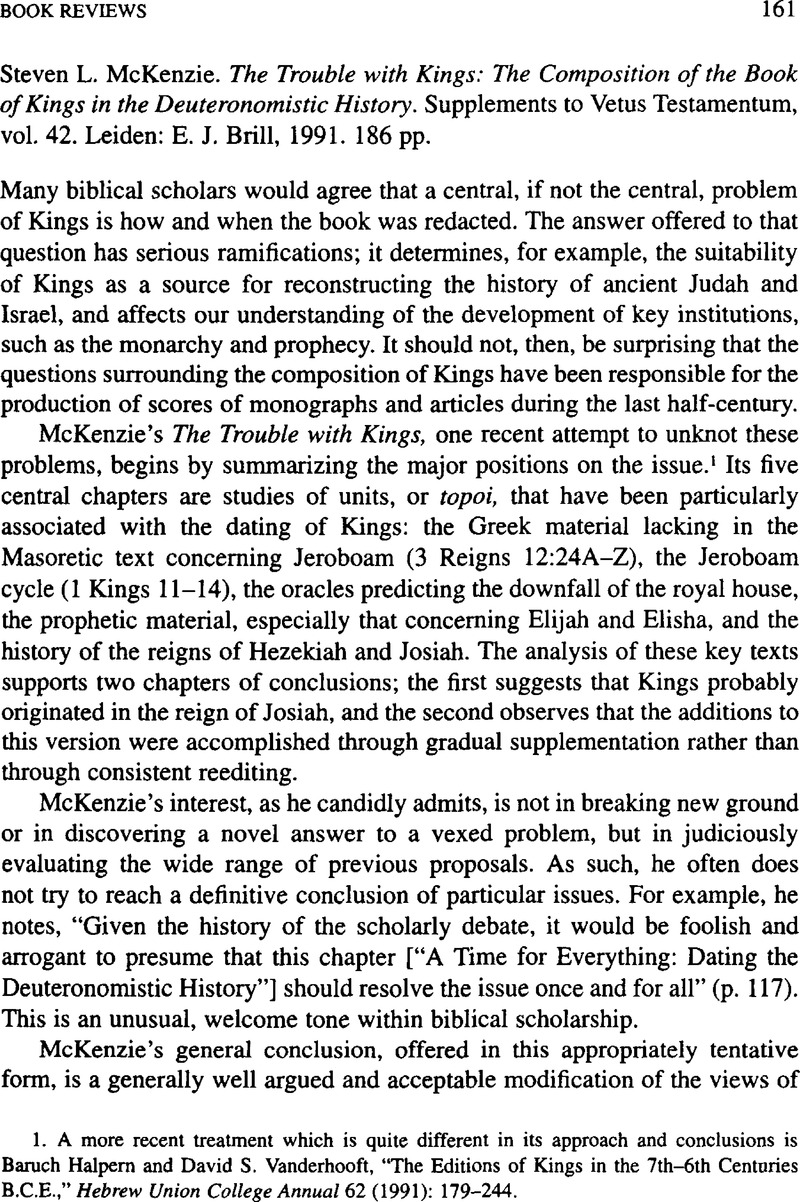No CrossRef data available.
Published online by Cambridge University Press: 15 October 2009

1. A more recent treatment which is quite different in its approach and conclusions is Baruch Halpern and Vanderhooft, David S., “The Editions of Kings in the 7th–6th Centuries B.C.E.,” Hebrew Union College Annual 62 (1991): 179–244.Google Scholar
2. Halpern, Baruch, The First Historians: The Hebrew Bible and History (San Francisco: Harper & Row, 1988) is also heavily indebted to Noth.Google Scholar
3. Nelson, Richard D., The Double Redaction of the Deuteronomistic History, JSOT Supplements 18 (Sheffield: JSOT Press, 1981), pp. 22–29.Google Scholar
4. Long, I Kings, FOTL 9 (Grand Rapids: Eerdmans, 1984), esp. pp. 18–21.
5. See, for example, the Chronicler's mention of the prophecy of Ahijah (2 Chr 10:15), which he had earlier excised from his source.
6. The linguistic dating of material by McKenzie is not as rigorous as that used by Avi Hurvitz; cf., e.g., Hurvitz, , A Linguistic Study of the Relationship Between the Priestly Source and the Book of Ezekiel: A New Approach to an Old Problem, CRB 20 (Paris: J. Gabalda, 1982).Google Scholar